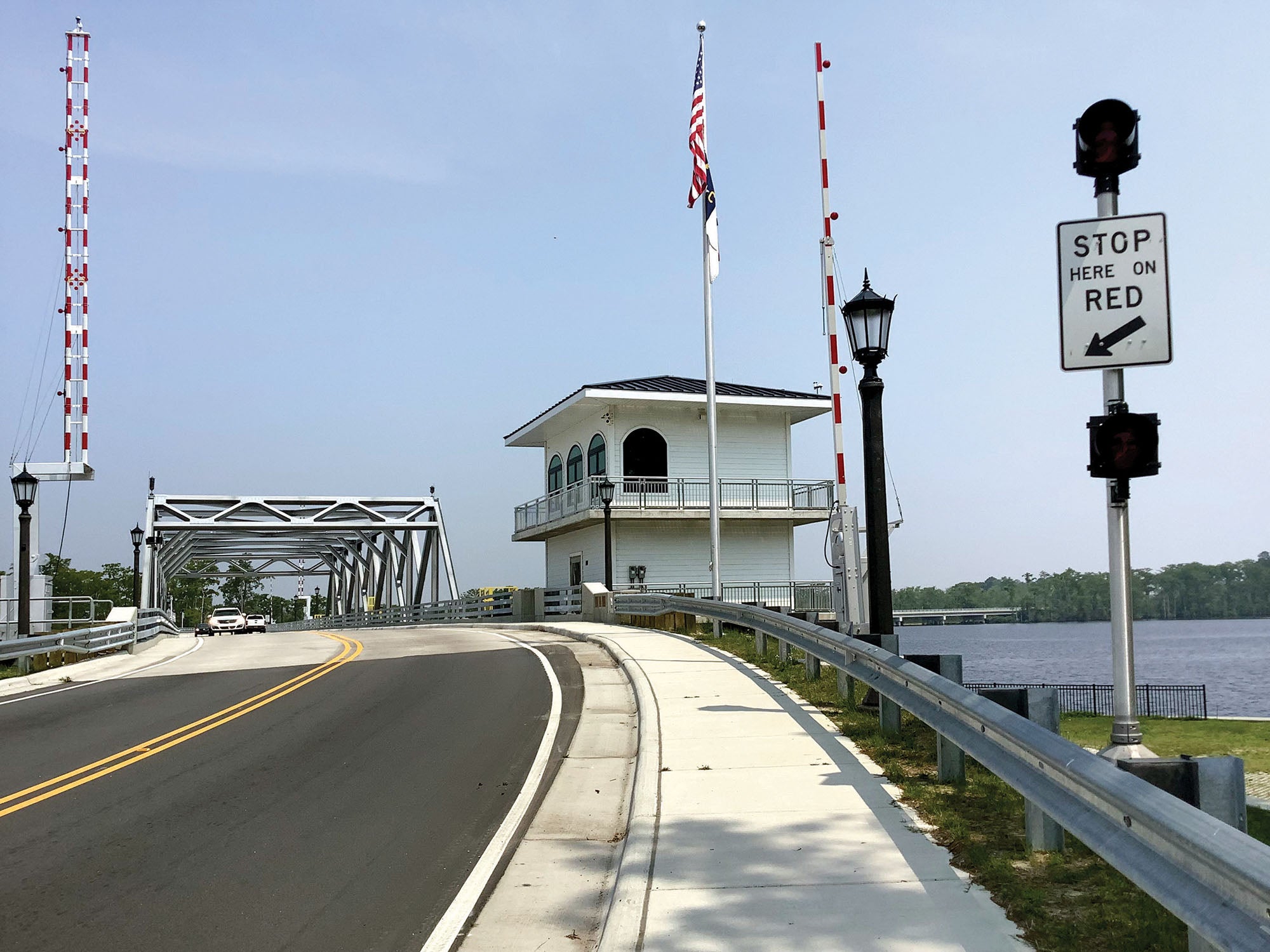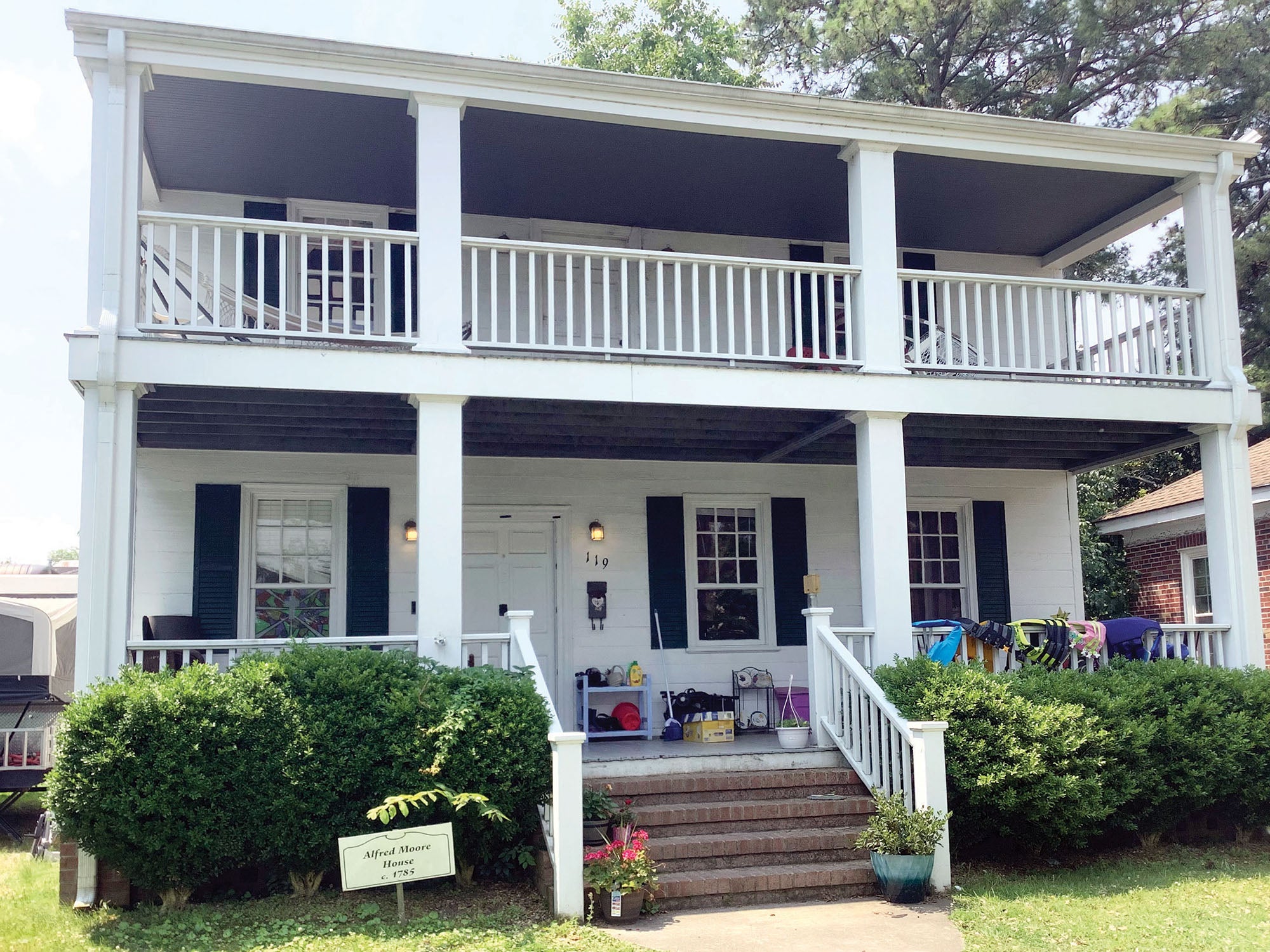DAVID FREEZE COLUMN: More eastern counties
Published 2:20 pm Tuesday, June 27, 2023
















|
Getting your Trinity Audio player ready...
|
Editor’s note: David Freeze is a runner, running coach and long-distance cyclist from China Grove in Rowan County. He is completing a challenge to run a few miles in every county seat in all 100 N.C. counties. Contact him at [email protected].
The group of county seats visited here are toward the end of my two-day swing into the northeastern part of N.C. on June 9.

David Freeze
Trending
The first town visited was Camden, the county seat of Camden County, centered at the intersection of U.S. 158 and N.C. 343 where I found five schools, a huge grain storage facility, the historic courthouse and old jail.
A few retail establishments helped, but there was not as much to see as usual. Camden is the only consolidated city/county in the state.
The Camden County Courthouse was built in 1847 and is still in use. The old jail next door was built in 1910, housing the county museum and the board of elections. The second floor has the original four cells plus a small museum which uses pictures and artifacts to tell Camden’s history.
Outside, stocks and a pillory have been rebuilt to show punishment used in the 18th century. The county was named for Sir Charles Pratt, the Earl of Camden in Britain.
The nearby Dismal Swamp waterway was dug mostly by slave labor and opened in 1805, connecting the Albemarle Sound and the Chesapeake Bay. It is the oldest continuously operating man-made canal in the U.S.
The Underground Railway for freedom-seeking slaves ran through the area and the large swamp helped their chances. Slave runaways often stopped for long periods on high ground in the swamp at gathering points that were less hospitable to those tracking them.
On April 19, 1862, Confederate troops repelled Union troops for five hours at Sawyer’s Lane, retreating to fortifications two miles north at Joy’s Creek only after being outflanked from the east. Both sides claimed victory: the North because they captured the field and the South because they prevented the destruction of the Dismal Swamp Canal Locks, three miles northwest in South Mills. Detailed written history of the event and battle exists and is fascinating reading. Battle of South Mills (rblong.net)
Trending
Next stop was Hertford, not to be confused with Hertford County already visited in Winton.
Hertford, county seat of Perquimans County, was part of my earlier journey around the inner and outer banks by bicycle. The historic downtown, a tribute to native son Jim “Catfish” Hunter and the many beautiful riverfront homes made this stop special.
Hertford, named after Hertford, England, was incorporated in 1758 on land purchased in 1662 from the Yeopim Indians. Architecture from the 1700s and 1800s line the streets of N.C.’s seventh oldest town. Agriculture, mainly cotton, corn and soybeans, makes Hertford still a farming community.
The Newbold-White house, built in 1730, is the oldest brick structure in the state. The Perquimans County Courthouse on Main Street was built between 1819-1825. Inside is the oldest land deed in the state — the first documented transaction in which a settler paid a Native American for land.
In Hertford, the small Edmundson-Fox Memorial commemorates the state’s first religious services. William Edmundson drew settlers to his first Quaker, or Society of Friends, meeting under a grove of towering cypress on the Perquimans riverbank in March 1672. Later that year, founder George Fox held meetings at the homes of area residents. Both exposed colonists to the relatively new Quaker religion that quickly took hold in the area.
The Perquimans River also inspired “Carolina Moon,” by Benny Davis and Joe Burke, in the 1920s after viewing a moon rise over the serene stretch of water. Perry Como and Dean Martin had hits with the song.
Hunter was the first baseball player signed to a major free agent contract. He helped win five world series championships and was an eight-time all-star. During high school, Hunter was shot in the foot by a brother during a hunting accident.
Extensive surgery revived his baseball hopes.
He retired early before dying of ALS, Lou Gehrig’s disease. A small monument downtown honors Hunter.
I left Hertford for Edenton, the second capital of North Carolina from 1722-1743 and the county seat of Chowan County. The biggest historical event in Edenton’s history was the Edenton Tea Party, America’s first political action by a group of women, done in 1774 in support of the Boston Tea Party. The town was established in 1712 and went though several name changes before settling in 1722 on Edenton to honor Gov. Charles Eden who had died earlier that year.
Edenton is the home of the 1886 Roanoke River Lighthouse, facing Edenton Bay at the head of the Albemarle Sound. The lighthouse is called a screw-pile design because of its original support system. Each piling was literally screwed into the river or sound bottom so they would not pull out in heavy storms and hurricanes. The 1719 Lane House is likely the oldest in North Carolina and the 1767 Chowan County Courthouse, another National Historic Landmark, has been used since its construction.
Then on to Windsor, established in 1766, has been the county seat of Bertie County since 1794 when the courthouse and prison were moved from the old town of Cashy. Windsor is also the center of an agricultural and industrial economy based on farm products and the timber industry.
The town was established at Gray’s Landing on the Cashie River. Loaded with more antebellum homes, Windsor is anchored by the Bertie County Courthouse, built in 1889. A small Civil War battle occurred here in 1864, with no significant gains by either side.
With now 62 county seats complete, 38 more are ahead. I had 6.22 miles on my feet in these four wonderful towns. See you soon!




















